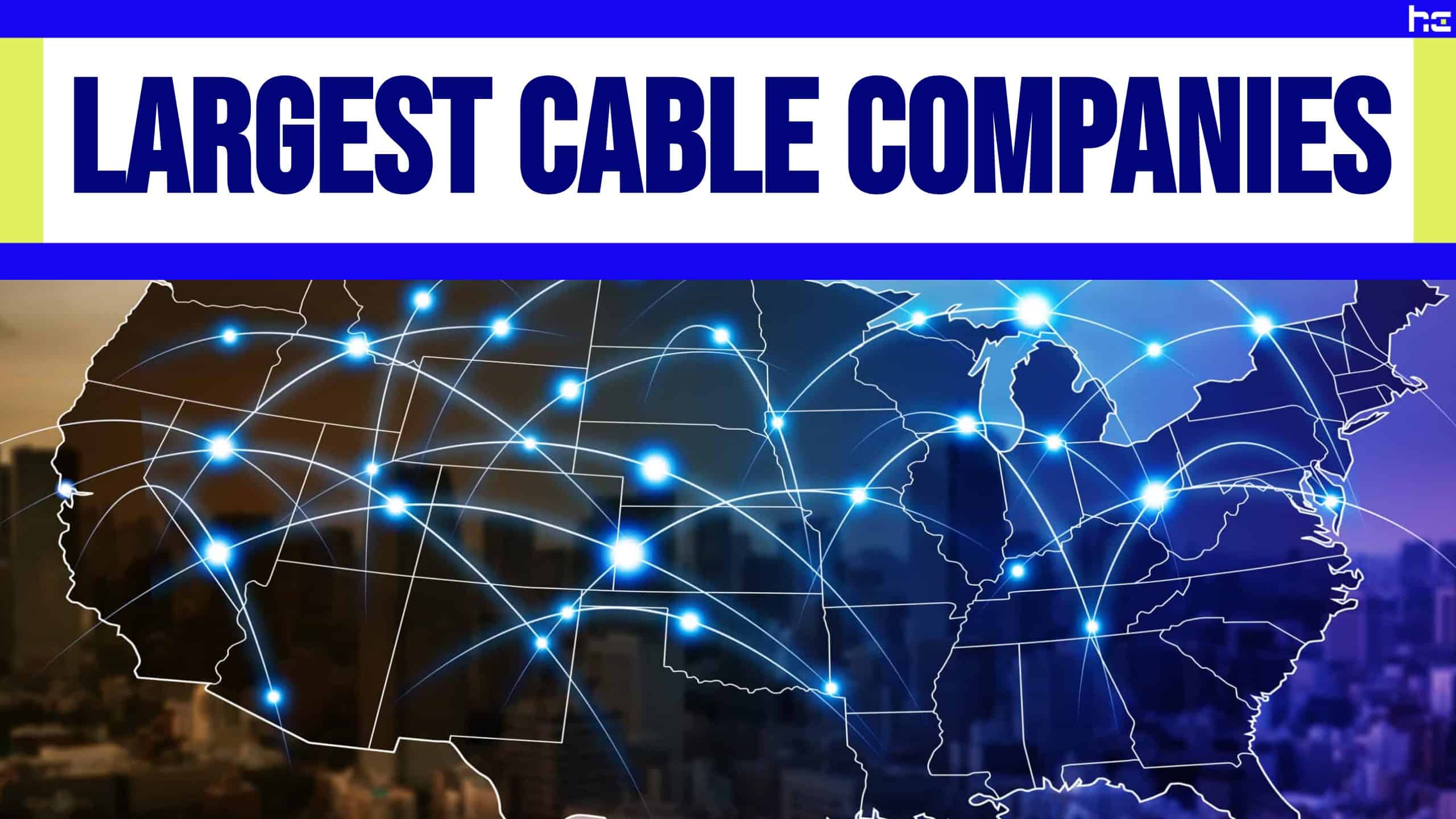U.S. cable providers earned a cumulative revenue of $105.8 billion in 2023, a notable increase from $86.3 billion in 2020. However, the rise of streaming services and social media has decreased subscribers in the cable industry. In 2023, the number of subscribers to cable TV dropped to 72.2 million from 98.7 million in 2016. The largest cable companies in the U.S., such as Comcast, Charter Communications, and DirecTV, take home the majority of this revenue.
What Are the Largest Cable Companies in the U.S. by Subscriber Count?
There are two main ways to measure how “large” a company is: revenue generation and subscriber count. Usually, a company with a high subscriber count also generates more revenue. The following cable companies have the most subscribers across the U.S.
#1: Comcast – 14.5 Million Subscribers
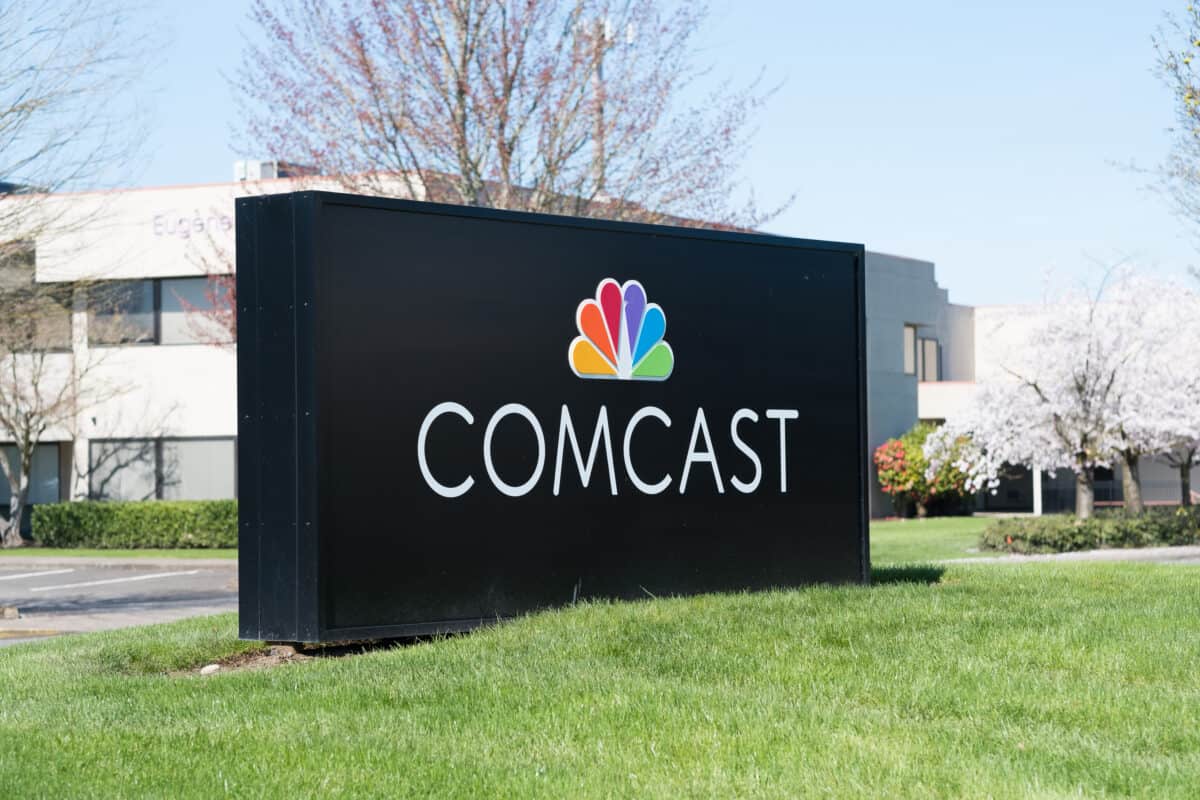
©Joshua Rainey Photography/Shutterstock.com
Comcast was founded in 1963 and has headquarters in Philadelphia, Pennsylvania. The company offers cable TV, digital telephone, direct-broadcast satellite, and broadband services. TV, internet, and home phone services are offered under the Xfinity brand.
As of December 2023, the company had 14.495 million subscribers, holding up to 24% of the pay-TV market in the country. In 2022, Comcast generated a revenue of $121.43 billion, a significant increase from $116.4 billion in 2021. It has doubled its revenue in the past decade.
Of the total revenue generated, $66.32 billion came from cable communications. The second most lucrative segment was NBCUniversal, bringing the company $39.2 billion in 2022.
#2: Charter Communications, Inc. – 14.4 Million Subscribers

©Burdun Iliya/Shutterstock.com
Charter Communications, Inc., commonly known as Spectrum, has headquarters in Stamford, Connecticut, and was founded by Barry Babcock, Howard Wood, and Jerald Kent in 1993. The company’s subsidiaries include Spectrum Mobile, Spectrum News 13, and Time Warner Cable Media.
Charter Communications, Inc. also provides business-to-business internet access, video entertainment services, business telephones, and wireless backhaul. It sells its production and advertising sales services under Spectrum Reach.
Charter Communications, Inc. had 14.379 million pay TV subscribers in 2023, a decrease from 15.2 million subscribers in 2021. By the last quarter of 2022, the company generated a revenue of $54 billion, a 4.5% year-over-year growth.
#3: DirecTV – 11.85 Million Subscribers
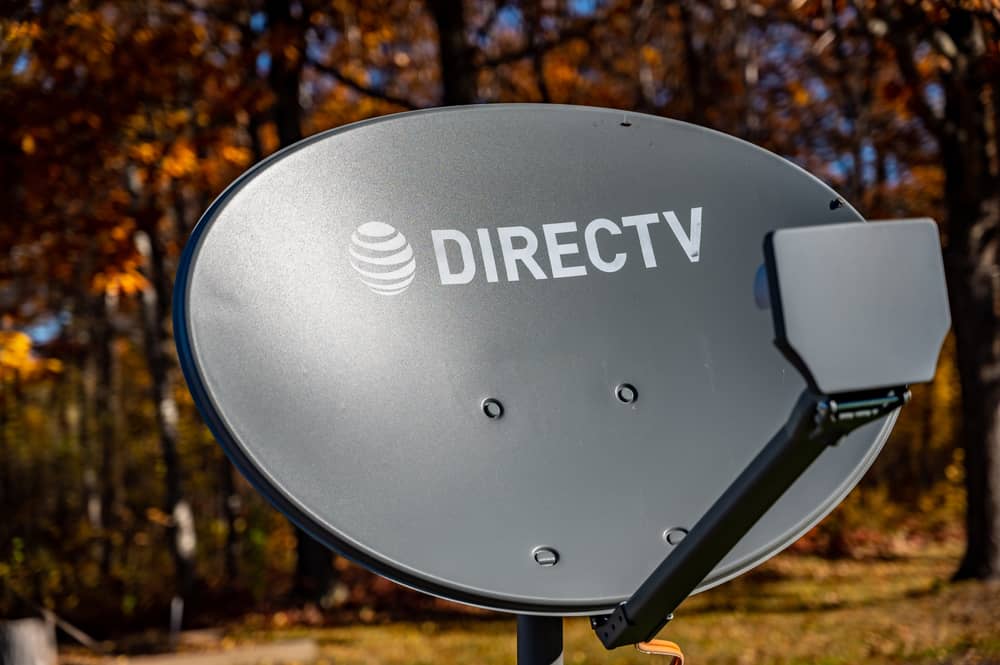
©Lost_in_the_Midwest/Shutterstock.com
Broadcast satellite and cable TV provider DirecTV started in 1994 as an invention of Hughes Electronics. It became a subsidiary of American conglomerate AT&T, Inc. in 2015. Since August 2021, DirecTV has been a new standalone company, with AT&T (70 percent) and TPG Capital (30 percent) as its owners.
As of the third quarter of 2023, the number of Direct TV video subscribers was around 11.85 million in the United States. Like many similar providers, DirecTV is hemorrhaging from the increased interest in streaming TV services across the U.S.
#4: DISH Network – 6.72 Million Subscribers

©Jonathan Weiss/Shutterstock.com
DISH Network Corporation is a U.S.-based satellite and cable television provider. The publicly traded company provides pay-TV services to commercial and residential customers in the U.S. Besides premium channels and international programming, DISH Network also provides on-demand content. Users can also benefit from the company’s digital video recording services to record TV programs for later viewing.
Founded in 1995 in Meridian, Colorado, by Charlie Ergen, the company’s headquarters are in Englewood, Colorado. Its subsidiaries include DISH DBS Corp, Boost Mobile, and Sling TV. DISH Network finished 2023 with 6.72 million subscribers, a decline from 8.2 million in 2021. The company’s revenue also dropped from $4.45 billion in 2021 to $4.04 billion in 2022.
#5: AT&T – 3.2 Million Subscribers
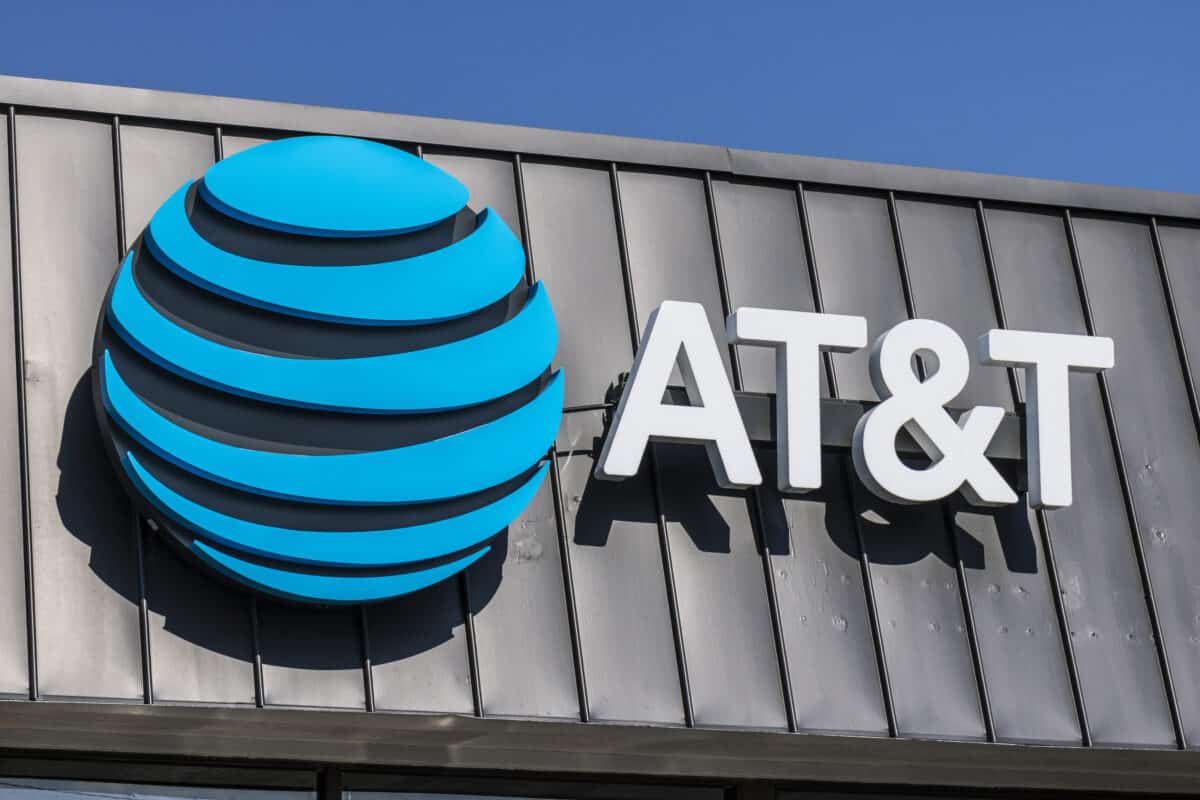
©Jonathan Weiss/Shutterstock.com
AT&T is as old as the first telephone, so it makes sense for it to rule the telecommunications industry today. Alexander Graham Bell, Gardiner Greene Hubbard, and Thomas Watson founded the Bell Telephone Company in 1876. The company later went on to become AT&T in 1983. Today, AT&T is a holding company providing technology, media, and telecommunication services worldwide.
Headquartered in Dallas, Texas, AT&T has over 160,700 employees. Its subsidiaries include AT&T Communications and AT&T Mobility. The company generated a revenue of $120.7 billion in 2022.
In 2020, AT&T had 3.51 million pay-TV subscribers, an increase of 70,000 from the previous year. An addition of 280,000 fiber customers in the last quarter of 2022 further bumped the company’s rankings and increased its share value. As of the last quarter of 2023, AT&T had 3.2 million subscribers.
#6: Verizon – 3.08 Million Subscribers

©Heerapix/Shutterstock.com
Verizon offers cable services under the Fios TV brand, giving customers access to premium channels, international programming, and on-demand content. Fios TV is known for its multi-room DVR, which enables customers to record and watch videos from multiple TVs in the same household. The company was founded in 1983 in Delaware, but its headquarters are now in New York. Some of its subsidiaries include Verizon Fios, Visible, Verizon Business, etc.
As of the end of 2023, Verizon had 3.08 million TV subscribers, a decline from 3.3 million in 2022. The company ended 2021 in full force, with Fios earning $12.7 billion, a 4.6% year-over-year increase.
#7: Cox Communications – 2.9 Million Subscribers

©monticello/Shutterstock.com
Cox Communications provides a wide range of telecommunication services, including cable TV, home phone, and internet. Its home automation services allow customers to control their connected home devices using a single platform.
The company first opened in 1962 and has headquarters in Atlanta, Georgia. Today, it has 2.9 million cable subscribers, forming a major chunk of its 6.5 million customer base. Apart from cable customers, the company also has 3.2 million telephone subscribers and 3.5 million internet subscribers.
According to Forbes, Cox Communications had revenues of $20.98 billion in 2022. It was also ranked 13th on the Forbes list of the largest private companies in America the same year. In the past decade, the company has invested over $15 billion in infrastructure upgrades for phone, internet, and video services. It further plans to spend another $10 billion in the next five years.
#8: Altice USA – 2.33 Million Subscribers
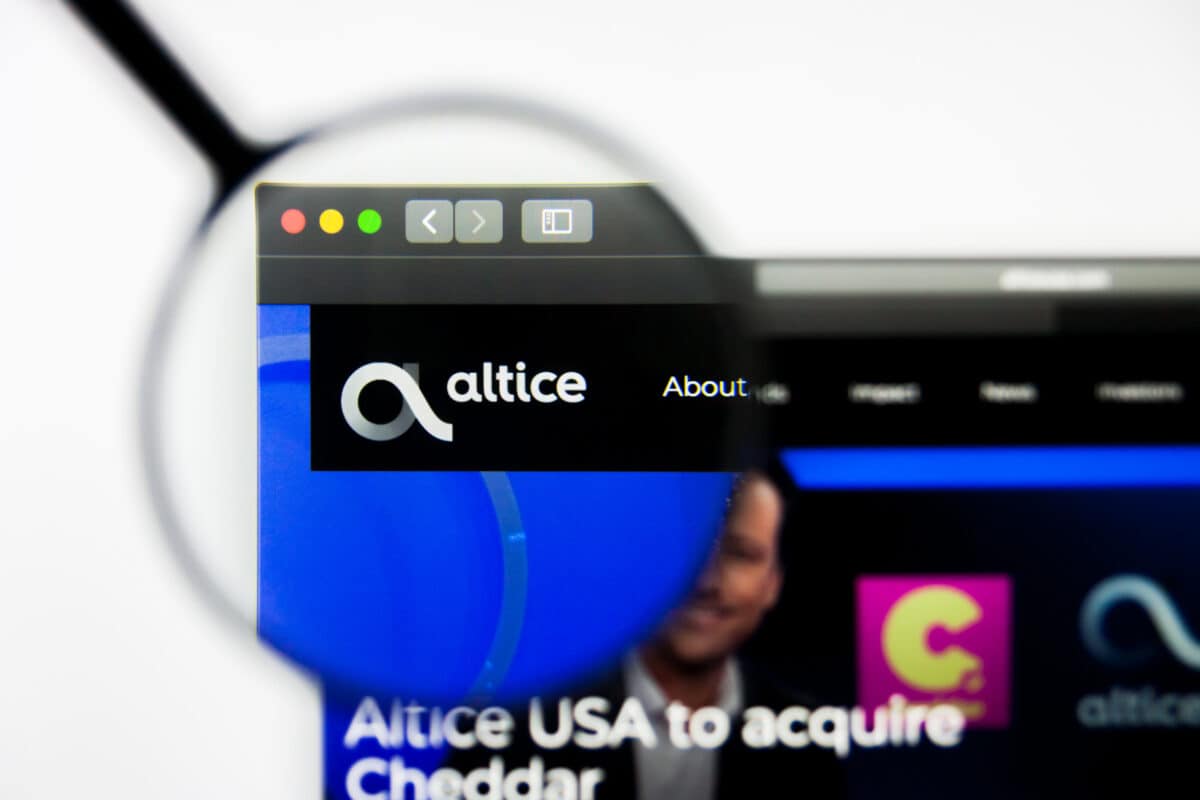
©Pavel Kapysh/Shutterstock.com
Altice USA is popular for its fiber-optic internet, providing high-speed connectivity to residential and commercial customers. The company also offers cable television services, including DVR capabilities and on-demand content. Founded in 2015, the company’s headquarters are in Long Island City, New York. Its two main subsidiaries are Lightpath and Suddenlink Communications.
In 2017, the company went public and started trading under the symbol ATUS on New York Stock Exchange. It popped over $1.9 billion in its initial public offering and 63.9 million of its shares sold for $30 apiece. In 2021, the Franco-Israeli tycoon Patrick Drahi bought the company for a $7.3 billion valuation. The green light for the company’s privatization came as a result of the shareholders approving Drahi’s buyout offer.
Altice had over 3 million TV subscribers in the last quarter of 2019. However, the subscriber count has dropped since then. The company had 2.33 million subscribers by the end of 2023.
#9: Frontier Communications – 240,000 Subscribers
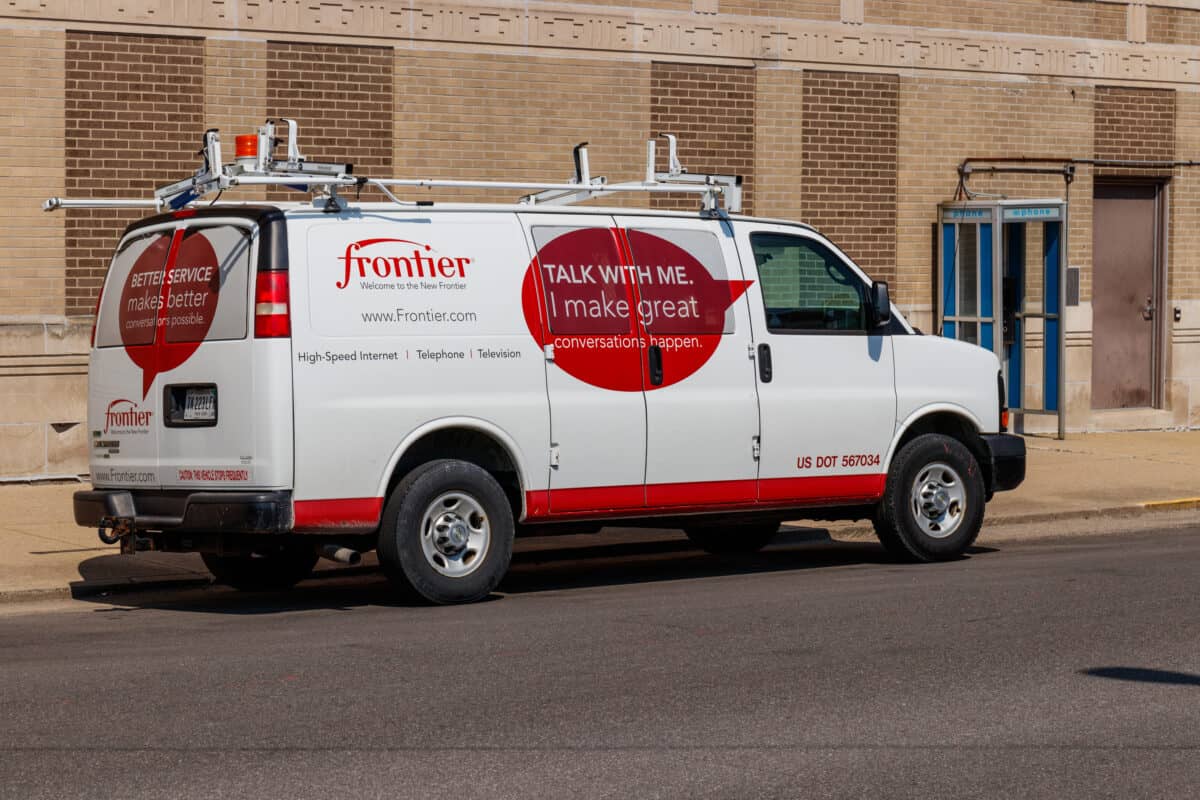
©Jonathan Weiss/Shutterstock.com
Frontier Communications Parent, Inc. is a telecommunications company that initially served smaller communities and rural areas only. It now offers its services to large metropolitans but remains a lesser-known brand. The company was founded in 1935 and is headquartered in Norwalk, Connecticut. Many remember the company as Citizens Utilities Company. It later changed its name to Citizens Communications Company and then to Frontier Communications Corporation.
In 2020, the company filed for bankruptcy. Yet it was later relisted as Frontier Communications Parent, Inc. in 2021 after it partnered with YouTube. The partnership gave Frontier customers $10 off their YouTube TV subscription for a year. Existing customers received $15 off their plans. The YouTube-Frontier duo claimed that this would save customers $400 on their cable bill per year.
By the end of 2023, Frontier had 248,000 cable TV subscribers. The company’s revenue for the year was $6.41 billion, a decrease from the previous year when the company made $7.1 billion.
#10: Cable One – 148,900 Subscribers

©monticello/Shutterstock.com
Cable One is a broadband communications company founded in 1986 that services over 1.1 million commercial and residential customers. It works under the Sparklight brand and provides services like broadband internet, cable TV, and phone.
As of 2021, the company had 247,000 cable customers after it lost 21,000 subscribers in 2021 Q4. Its revenue generation was $1.7 billion in 2022, an increase from $1.6 billion the previous year. Meanwhile, the net income was $234.1 million in 2022, a decrease from $291.9 million in 2021. As of the last quarter of 2023, it had 148,900 cable TV subscribers.
Are the Largest Cable Companies Still Relevant in 2024?
Some consumers consider cable TV to be “old school” since it’s been around for decades. However, it’s still a popular option for many Americans, even in the age of streaming. One of the reasons for the continuing popularity of the largest cable companies is that it’s a convenient way to watch TV. You don’t have to deal with streaming apps, buffering, or lag. The largest cable companies also offer a wide variety of content, including a number of cable-exclusive channels that you can’t find on streaming services. Finally, cable TV can be more affordable than streaming services, especially if you bundle it with your internet and/or phone service.
